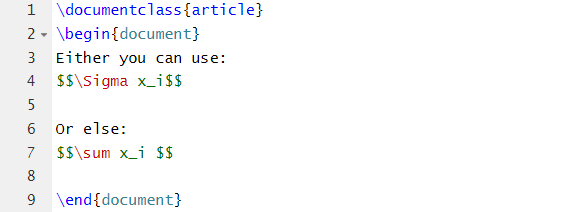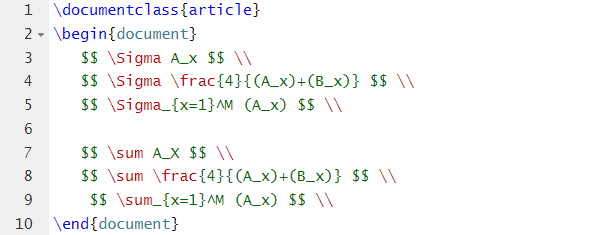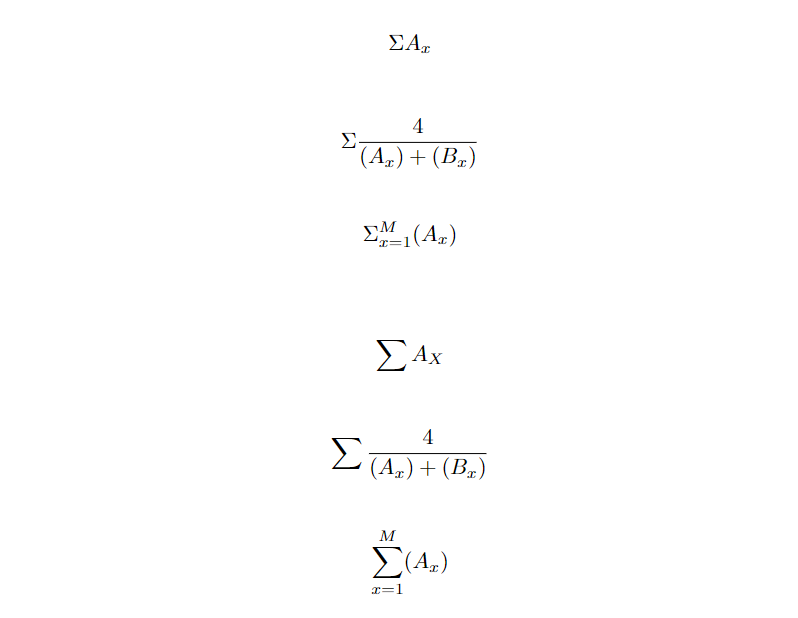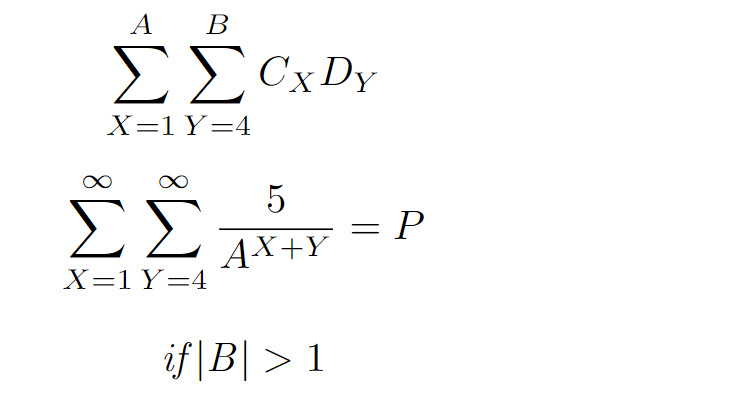An index accompanies this symbol that encompasses all the essential terms to be considered in the sum. Hence, the summation symbol has a vital role in mathematical expressions. So, let’s look at the methods for creating and using summation in LaTeX.
How to Create and Use a Summation Symbol in LaTeX?
To write a summation symbol in LaTeX, you can use codes like \sum, \sigma, etc. Let’s start with the simple examples and use these source codes to write the summation symbols:
\begin{document}
Either you can use:
$$\Sigma x_i$$
Or else:
$$\sum x_i $$
\end{document}
Output
Similarly, you can create different types of mathematical equations using the following source codes:
\begin{document}
$$ \Sigma A_x $$ \\
$$ \Sigma \frac{4}{(A_x)+(B_x)} $$ \\
$$ \Sigma_{x=1}^M (A_x) $$ \\
$$ \sum A_X $$ \\
$$ \sum \frac{4}{(A_x)+(B_x)} $$ \\
$$ \sum_{x=1}^M (A_x) $$ \\
\end{document}
Output
Let’s take another example that contains a summation symbol with the above or below limit condition:
\usepackage{amsmath}
\begin{document}
\[ \sum_{i=2}^{M}A_i = A_4 + A_3 + A_2 + A_1+ \cdots + A_M \]
\end{document}
Output
You can add multiple expressions under the summation using the \atop source code:
\begin{document}
\[\sum_{ 1 \leq x \leq A \atop 1 \leq y \leq A }B_{x,y}\]
\end{document}
Output
Now let’s write the source code to use multiple summation symbols in the mathematical expression:
\begin{document}
$$\sum\limits_{X=1}^A\sum\limits_{Y=4}^B C_X D_Y $$
$$\sum\limits_{X=1}^\infty\sum\limits_{Y=4}^\infty \frac{5}{A^{X+Y}}= P$$
$$\mathit{if}|\mathit{B}|>1$$
\end{document}
Output
Conclusion:
This was the concept of summation and the methods for writing and using the summation symbol in LaTeX. We have included two different codes and examples to explain everything easily.










